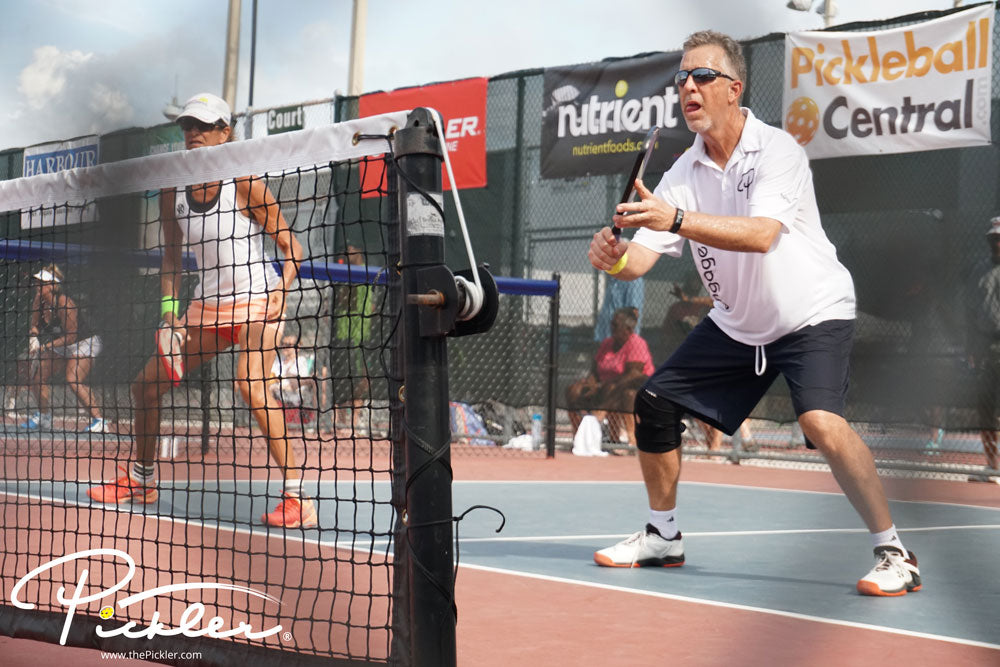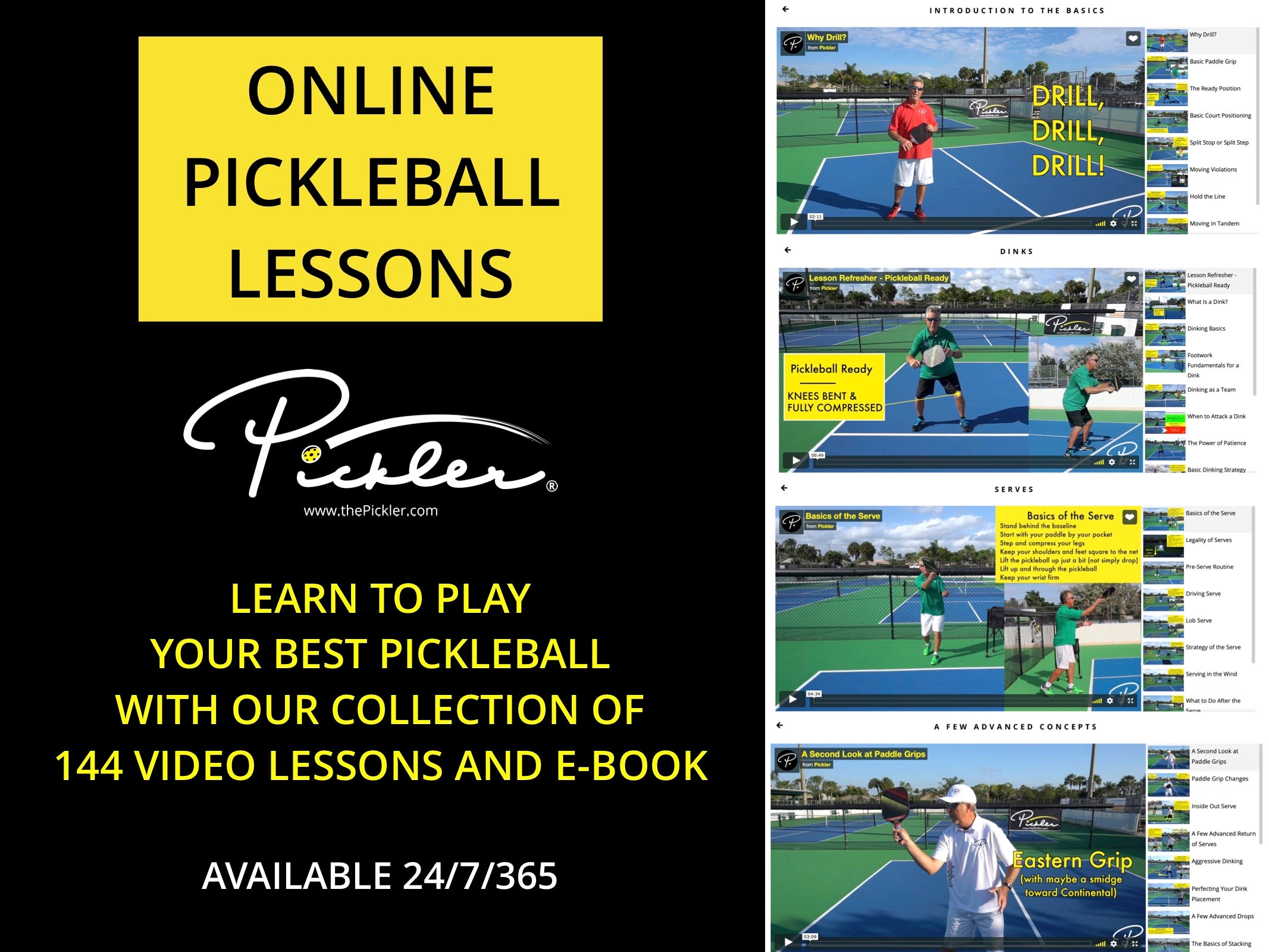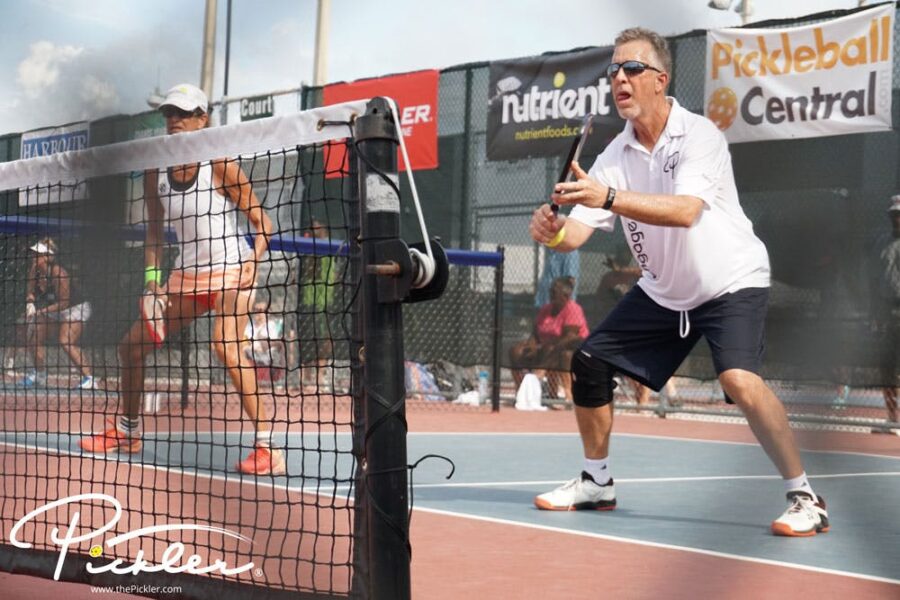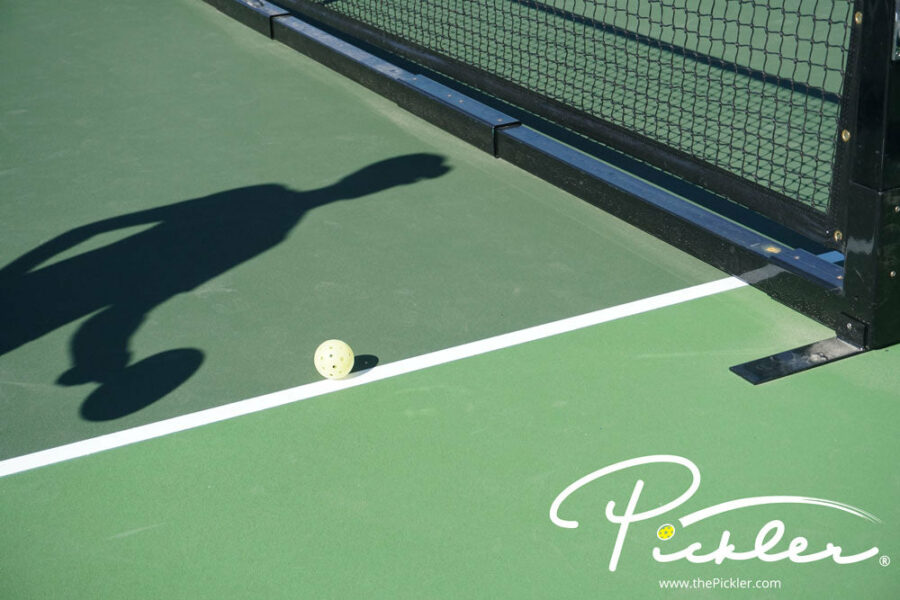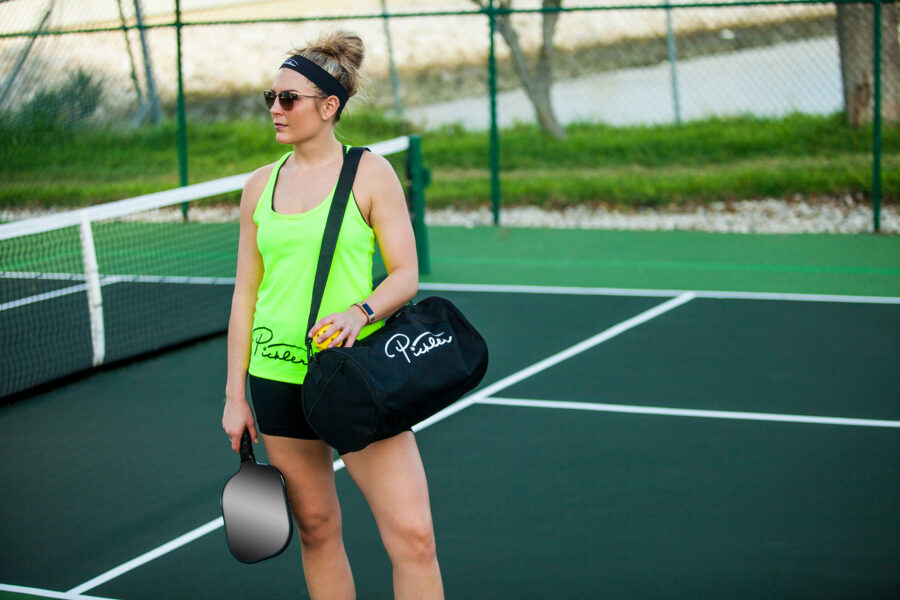The sport of pickleball is changing. It is becoming faster and there are more drives than ever on the pickleball court. This is especially true as more and more players with tennis, or other racquet sport, backgrounds are migrating to the sport of pickleball. The background of these players, which are affectionately called “bangers,” tend to give them an advantage when it comes to quickly adopting drives and other fast-paced shots on the pickleball court.
A banger in pickleball is a player that likes to consistently drive the pickleball. A banger likes to play with pace and power and, typically, does not like to engage in the soft game—in other words, a banger typically does not like to engage in the dinking game or hit drop shots.
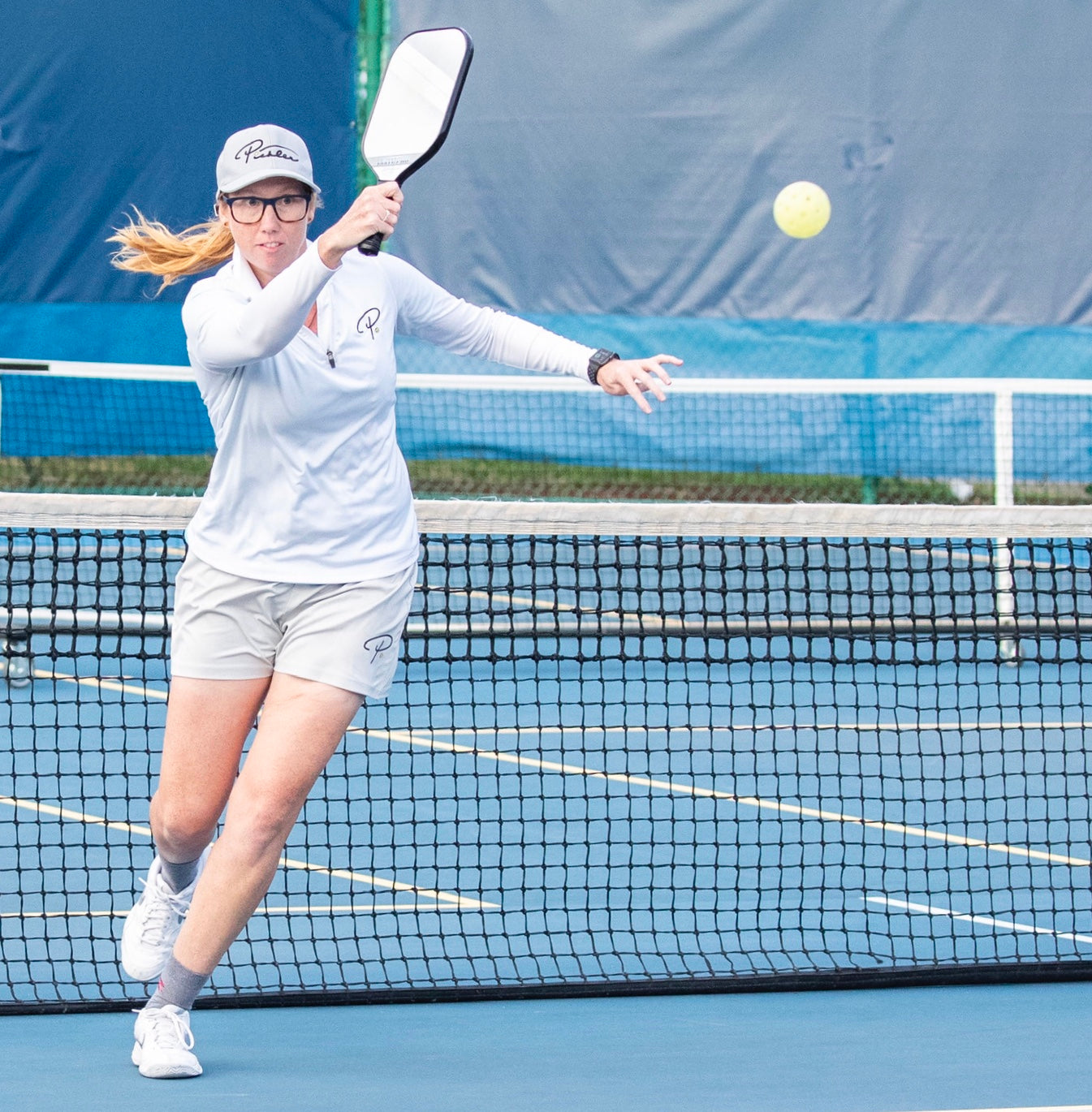
In light of the “rise of the banger” on the pickleball court, it is important to understand how to diffuse and defeat the banger, especially if you are a player that prefers the soft game. This pickleball blog will break down 7 strategies on how to defeat a banger in pickleball.
1. Always Be Ready
Bangers like to bang and drive the pickleball. So, always expect the drive from the banger. If the banger decides to mix it up and dink or drop the pickleball, you will have plenty of time to react. So, be ready and anticipate the fast-paced drive. This is especially true for the third and fifth shots of each rally when the banger is on the serving team, which are usually the most troubling shots when playing against a banger on the pickleball court.
Being ready means that you are in an athletic stance at the Non-Volley Zone Line (also known as the Kitchen Line) with your paddle up and out in front of your body. Bend your knees, keep your eyes on the pickleball, and anticipate a fastball.
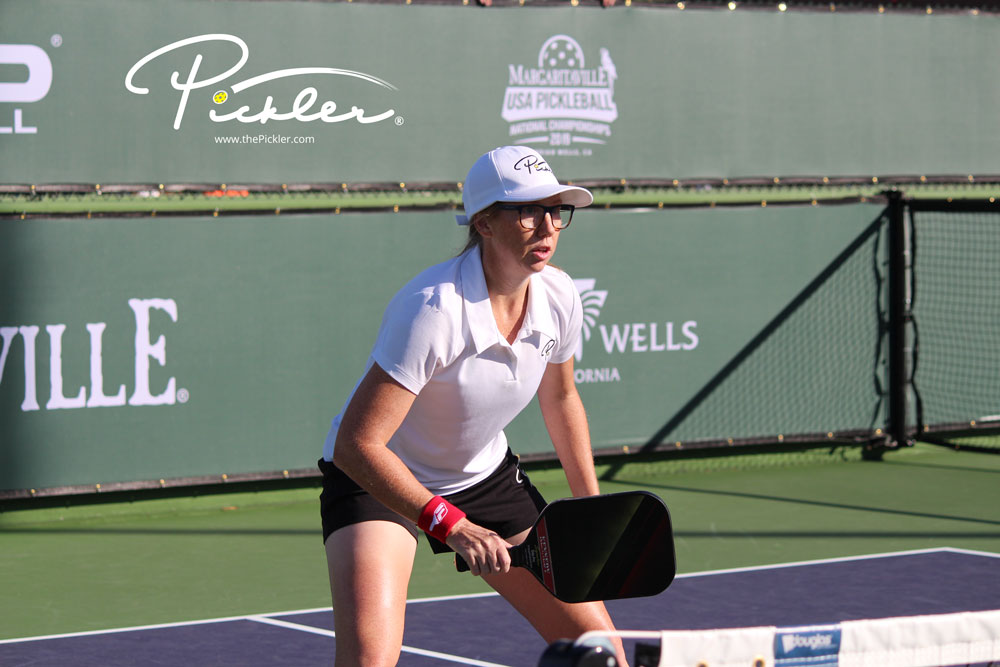
2. Avoid the Banger
Not every player is a banger. Sometimes, a banger will have a “dinker”—a player that does not drive the pickleball as frequently, but rather prefers the soft game—as a partner on the pickleball court. In this case, to diffuse the banger, hit the pickleball to the dinker. This is especially true on the third and fifth shots of each rally when the banger is on the serving team. This will help eliminate the tough drives for you and your partner, as the dinker will be more inclined to hit a drop shot on the third and fifth shots.
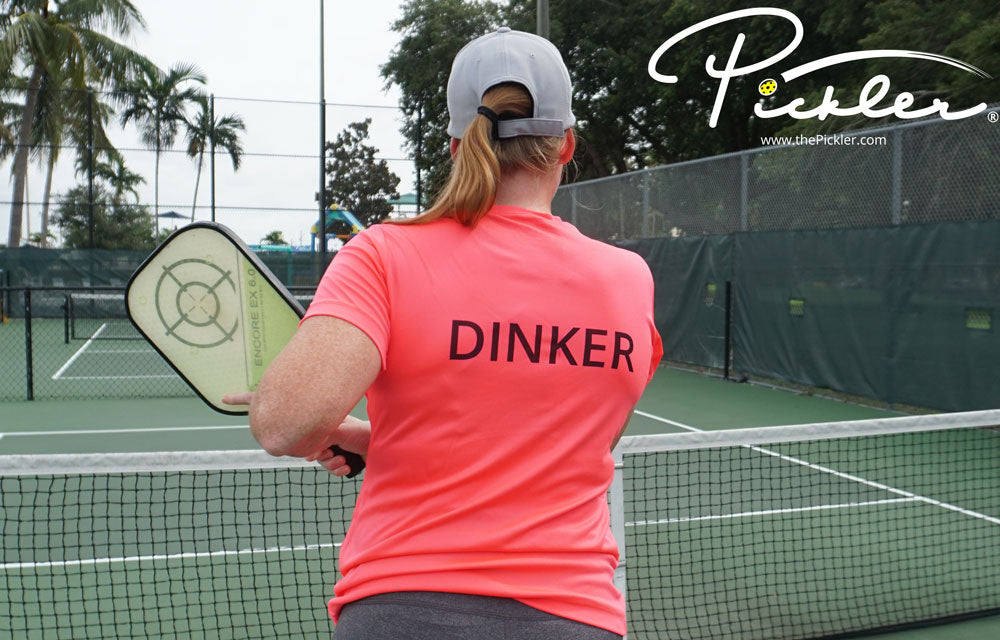
Sometimes, however, a banger will be paired with another banger. In that case, consider hitting to the banger that is less dangerous with the drive, as well as master the remaining strategies in this blog.
3. Hit a Deep Return of Serve
With bangers, it is particularly important to keep them back toward the baseline with a deep return of serve. This will require the banger to hit a better, stronger drive, and give you more time to react to the pickleball.
Also, consider hitting your return of serve so that the pickleball stays low to the ground. This can generally be accomplished by hitting your return of serve with some backspin or slice. By hitting a return that stays low to the ground, the banger will have to hit up on the pickleball, which may send the banger’s drive out of bounds.
Lastly, consider hitting your return of serve to the banger’s weaker side. Oftentimes, forehands and backhands are not made equally, and backhand shots are generally weaker than forehand shots. Determine whether the banger’s forehand drive is stronger than his or her backhand drive. If so, target your return of serve to the banger’s backhand side in order to make for a more difficult drive for the banger.
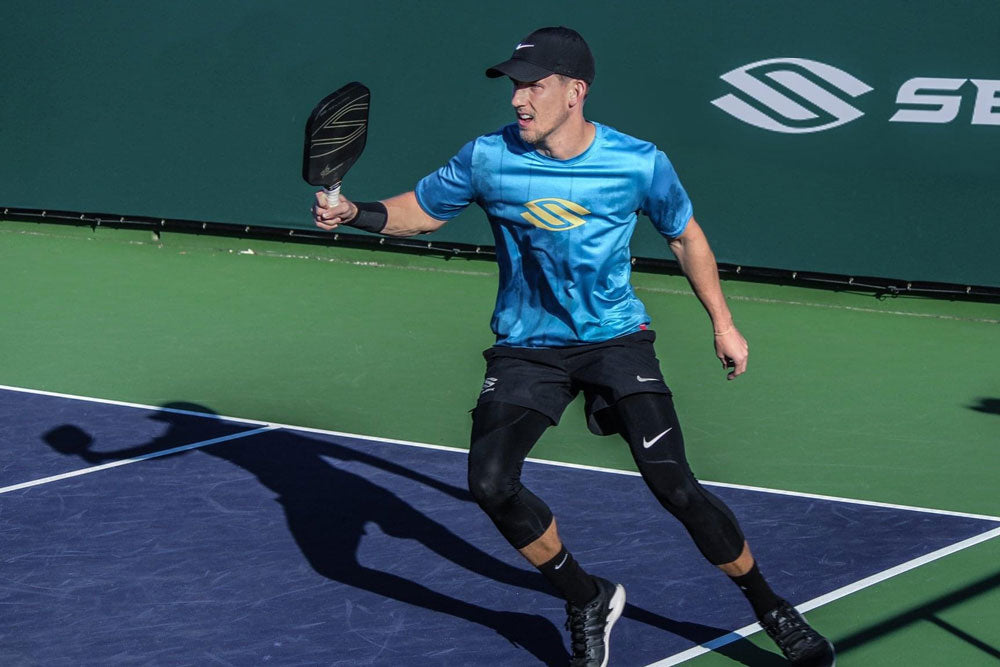
4. Be Wary of Out Balls
When playing bangers, it is important to be wary of shots that are traveling out of bounds. Any shot by the banger that lands out of bounds results in a winning rally for you and your partner. So, do not give the banger any free opportunities or keep the banger in the rally by hitting the banger’s out balls.
Detecting out balls is one of the most difficult skills on the pickleball court. Whether to let a pickleball go or not is a split-second decision. With that said, with practice, it is a skill that you can improve and, with improvement, will help you improve your win percentage on the pickleball court.
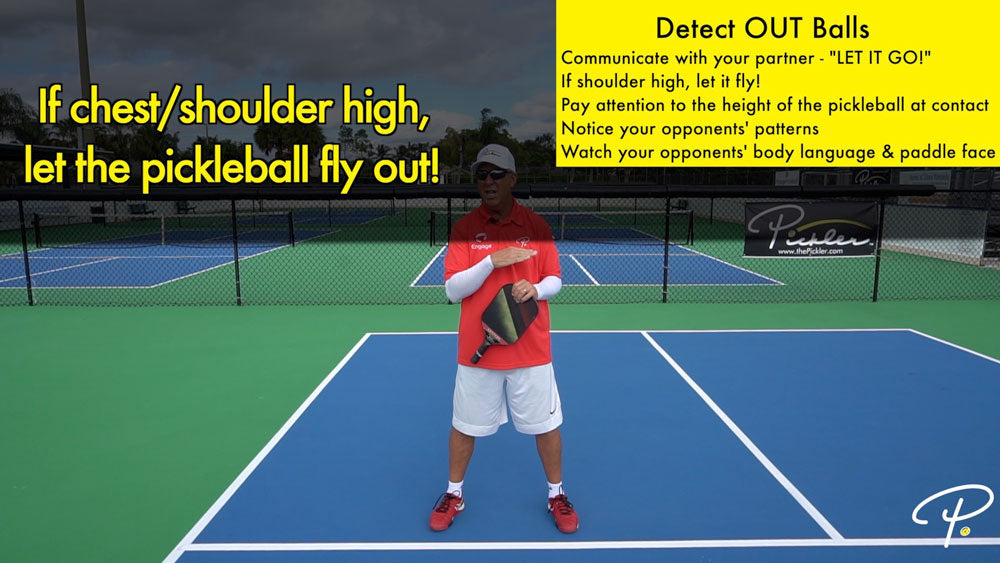
To help you in detecting out balls, use the following factors in your split-second decision making:
- Where is the banger on the pickleball court when hitting the shot? A typical banger will drive the third shot, then the fifth and so on. After a few drives, the banger will generally drive the pickleball out of bounds because the banger is slowly creeping up toward the pickleball net, which gives the banger less space to work with when driving the pickleball. As a result, the closer to the pickleball net that the banger comes, the more likely that the banger’s shot will be traveling beyond the baseline and out of bounds.
- How big is the banger’s backswing? Big backswings generally mean more pace or power. If a banger is taking a big backswing, be ready for more pace. If a banger is taking a big backswing and is really close to the pickleball net, the pickleball may be heading out of bounds.
- How high is the pickleball when the banger hits it? If the pickleball is low to the pickleball court and below the pickleball net, the banger will need to hit up on the pickleball to get his or her shot back over the pickleball net. When a banger hits up on the pickleball, the pickleball is more likely to sail high out of bounds. Be cognizant of where the banger is hitting the pickleball, as this could be a tell for an out ball.
- Does the banger hit the pickleball with top spin? If the banger is capable of hitting the pickleball with top spin (i.e., forward spin that travels from 6 o’clock to 12 o’clock), then the banger is more likely to keep the pickleball in the court. The banger will also be able to take a shot that is low on the court and below the pickleball net, and keep the pickleball in play. As a result, a banger with top spin is more dangerous and his or her shots are more likely to stay in. If a banger does not have top spin, then his or her shots are more likely to sail out of bounds.
- Is the banger hitting with or against the wind? Wind can play a major factor on the pickleball court. If a banger is hitting with the wind at his or her back, then the pickleball is more likely to travel out of bounds, as the wind will push the pickleball farther. However, if the banger is hitting into the wind, then the pickleball is more likely to stay in, as the wind will act as a resisting force to the banger’s shots. Pay attention to the wind and how the wind can affect a banger’s shots.
- How high is the pickleball relative to your body? Generally speaking, look for the pickleball that gets about chest/shoulder high or higher, as the pickleball will likely go out of bounds. Chest/shoulder high, let it fly! The exact height, however, will depend on your height and how low you are (i.e., how much you bend your knees) when the pickleball is traveling toward you.
5. Be a Wall
Be a wall and block the drive. Good blocks require little to no backswing, a loose paddle grip (if you have a tight grip, you will likely hit the pickleball too hard, as a tight grip will cause your paddle to act as a stronger backboard for the pickleball to bounce off of), and quiet hands. This will deaden the pickleball and help you to avoid hitting the banger’s drives inadvertently beyond the baseline and out of bounds.
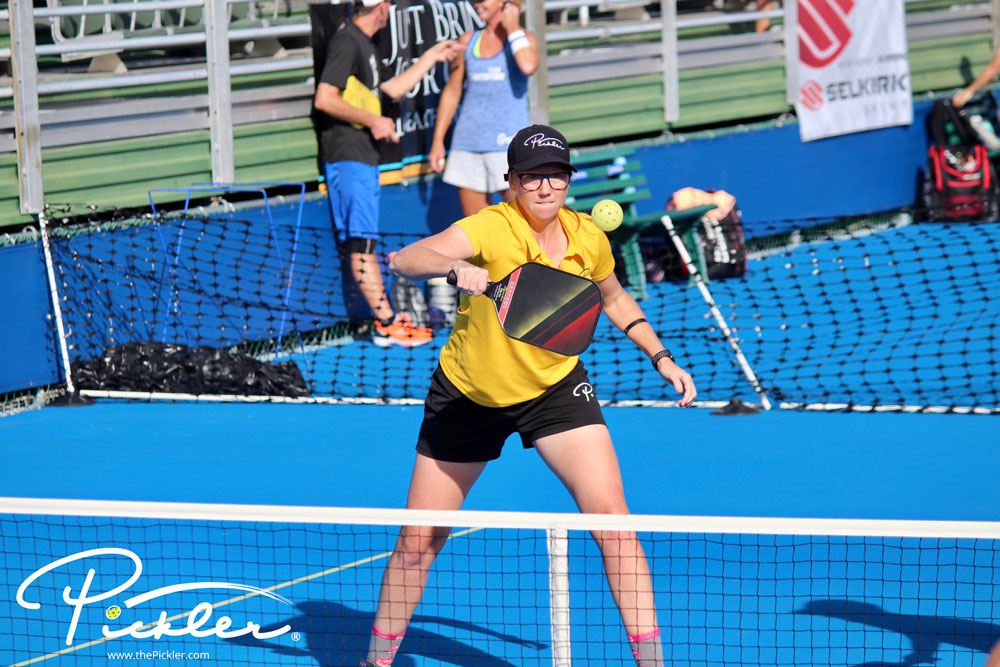
Once you have the feel for generally blocking the pickleball, the goal is to block the banger’s drives down at your opponents’ feet (and maybe even the backhand-side foot if the banger’s backhand side is his or her weaker side). To block down, be cognizant of your paddle angle, as you will want to angle your pickleball paddle in the direction you want the pickleball to travel (i.e., a slightly closed paddle face will direct the pickleball down toward the court). This will help you avoid inadvertent pop-ups or high blocks, which would give your opponents’ an easy “Shake and Bake,” which is a banger’s favorite set play on the pickleball court.
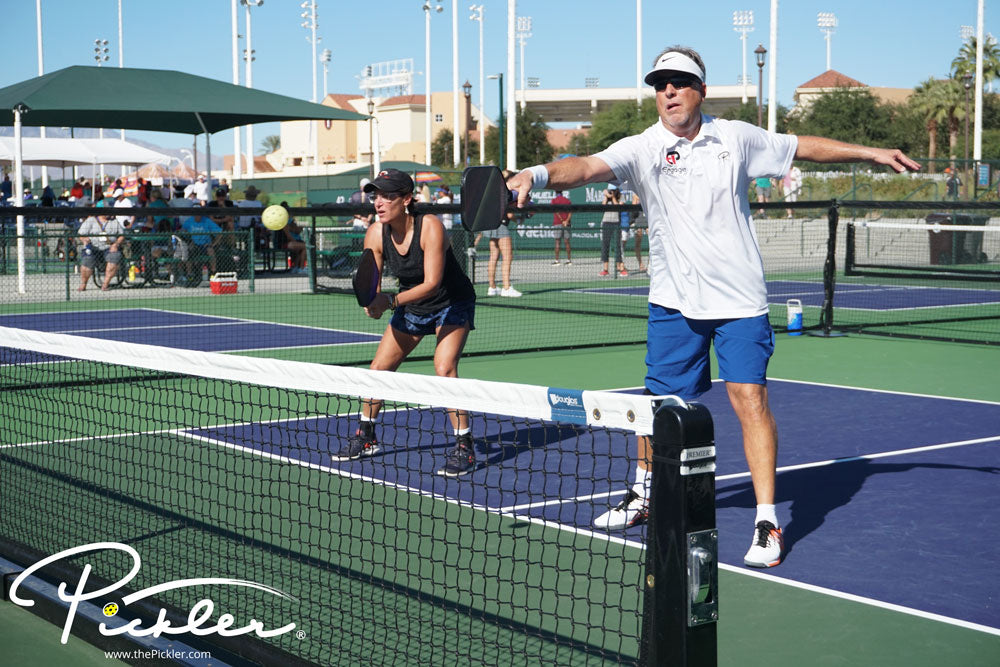
6. Keep the Banger Back
Generally speaking, always keep the banger back near the baseline when possible. Do not invite the banger into the Transition Area or the Non-Volley Zone or Kitchen Line. If you invite the banger in toward the pickleball net, you are giving the banger an opportunity to move his or her feet in toward the pickleball in an offensive manner, and possibly hit a more aggressive shot than if the banger was back near the baseline.
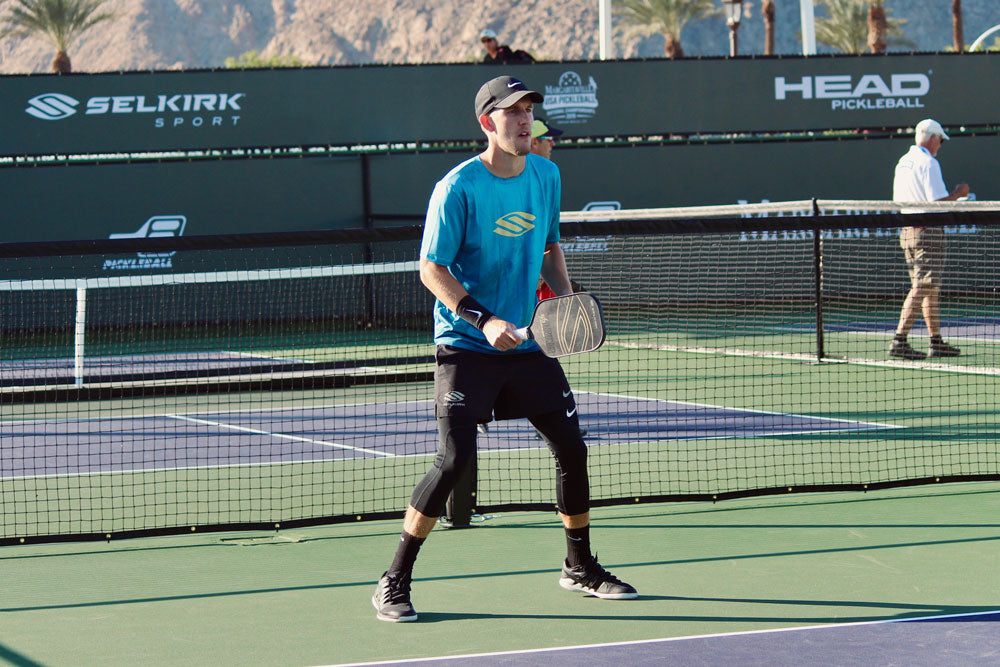
With that said, there may be opportunities where you could drop or block the pickleball into the Non-Volley Zone or Kitchen. This would be where the banger is not very mobile, so a short shot is very difficult for the banger to get to. A short drop or block into the Non-Volley Zone or Kitchen could also be effective if the banger is unable to dink (see the last strategy below).
7. Engage the Soft Game
Most pickleball players have either a strong hard game or a strong soft game, and are not likely strong in both areas. As a result, if you are good at dinking, engage the banger in dinking and try to make the banger uncomfortable (in other words, make the banger uncomfortable by doing something the banger does not like to do).
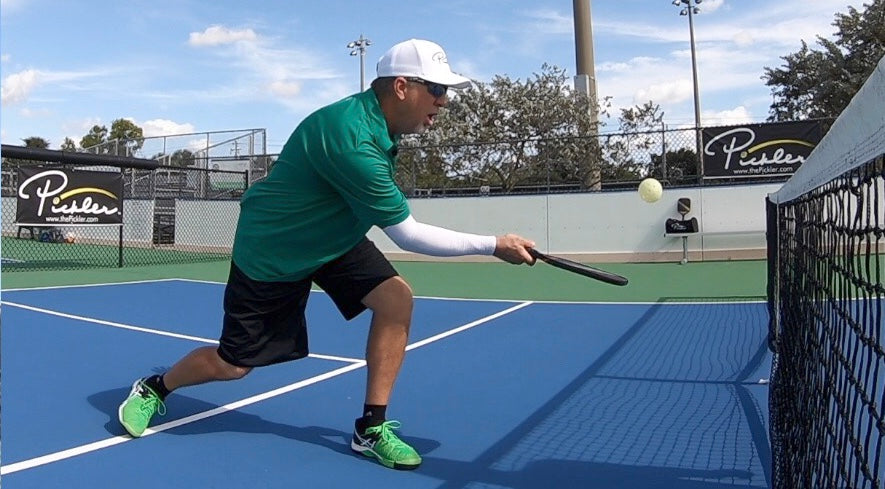
WANT MORE PICKLEBALL TIPS AND STRATEGIES?
If you want more pickleball tips and strategies on every aspect of your pickleball game, check out Pickler’s online video lesson collection called My Pro Pickleball Coach. My Pro Pickleball Coach is a fraction of the price of one clinic or even one lesson, and features over 140 video lessons (over 7 hours of instruction!), as well as a corresponding e-book. These online video lessons are available on demand 24/7 and breakdown every aspect of the sport of pickleball, including pickleball drills, strategy, and advanced concepts, so you will play your best pickleball.

